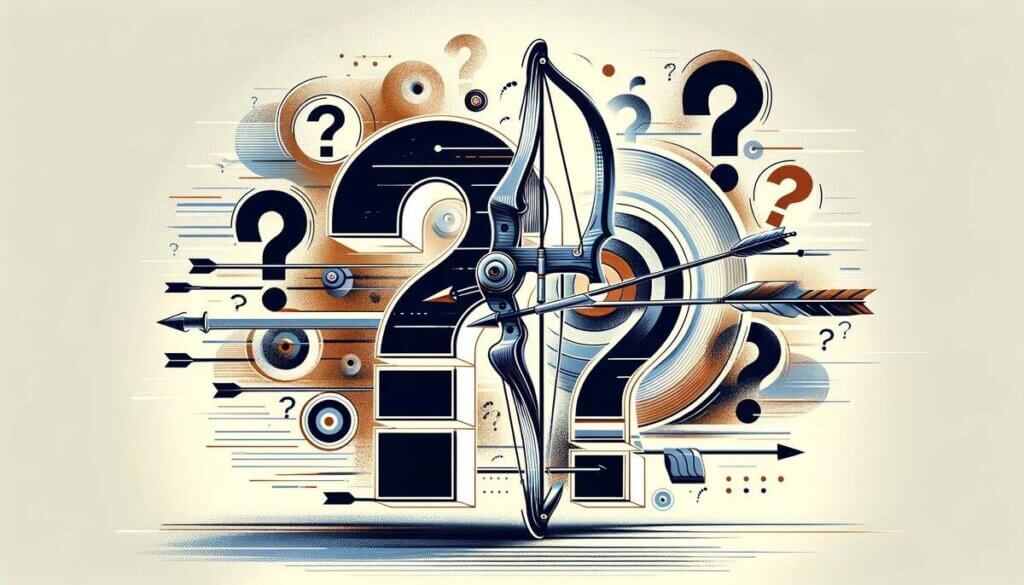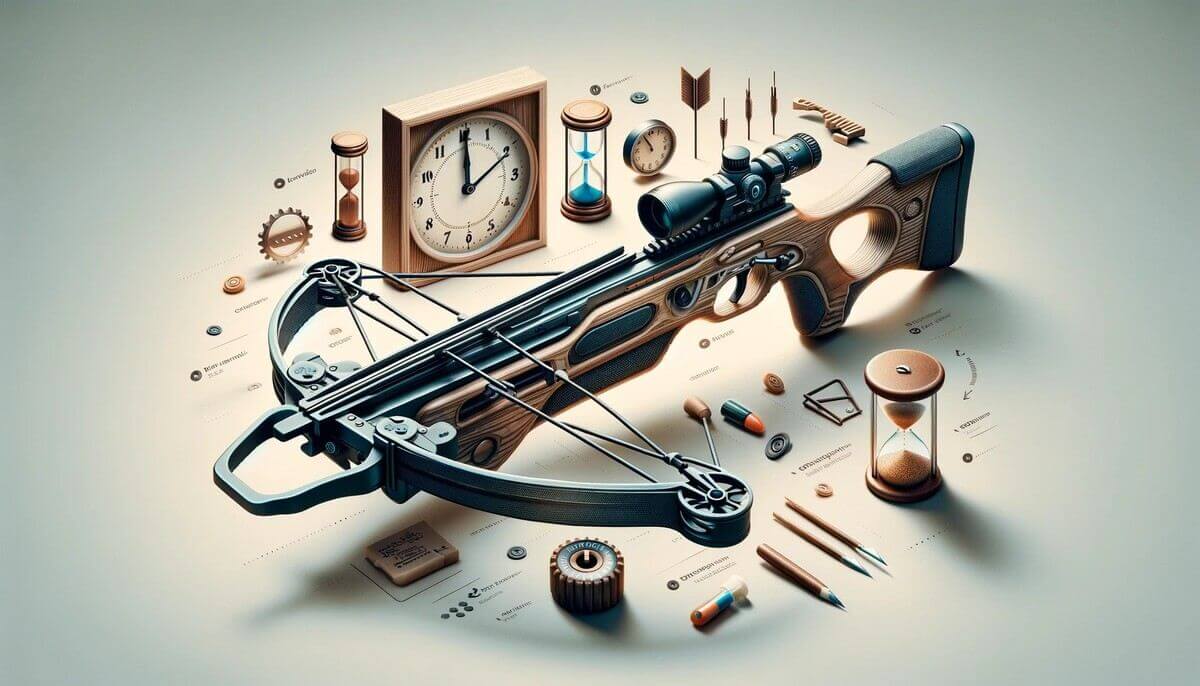Whether you’re a seasoned hunter or a newcomer to archery, understanding the ins and outs of your crossbow is crucial. One question that often surfaces is about the cocking duration: How long is it safe to keep your crossbow cocked?
Table of Contents
Understanding Crossbow Mechanics
To fully grasp the importance of this question, let’s start with the basics of crossbow mechanics. This article delves into the mechanics, risks, and best practices surrounding this question, aiming to keep you informed and your crossbow in top condition.
The Basics of a Crossbow
Parts and Function
At its core, a crossbow consists of a bow-like assembly mounted on a frame (similar to a gun stock), which shoots projectiles called bolts or arrows. When you cock the crossbow, you’re pulling the string into a locked position, which, in turn, sets the limbs under tension. This tension is what propels the arrow forward when you pull the trigger.
What Happens When a Crossbow is Cocked?
Tension and Stress on Components
Cocking the crossbow puts considerable stress on its limbs, string, and trigger mechanism. While this tension is essential for the crossbow to function, it also strains the materials. The longer the tension is maintained, the more stress is exerted on these components.
Factors Affecting the Duration a Crossbow Can Remain Cocked
The safe duration for keeping a crossbow cocked can vary based on several factors.
Type of Crossbow
The two main types of crossbows are recurve and compound. Recurve crossbows have simpler designs and may be more susceptible to stress, while compound crossbows often have sturdier mechanisms that might handle prolonged tension better.
Quality and Material of the Crossbow
The materials used in the crossbow’s construction (like fiberglass, carbon fiber, or aluminum) play a significant role in its resilience. Higher quality materials can often withstand longer periods of stress.
Environmental Factors
Your crossbow’s exposure to elements like moisture, heat, and cold can impact how long it can safely remain cocked. Extreme conditions can weaken materials and shorten the safe duration.
Potential Risks of Over-Cocking a Crossbow
Keeping a crossbow cocked for too long can lead to several problems.
Wear and Tear
Over time, prolonged tension can lead to the weakening or warping of limbs, stretching or fraying of the string, and wear on the trigger mechanism.
Accuracy Issues
A crossbow that’s been under tension for too long may lose its precision. This is often due to slight deformations in the limbs or string, making your shots less predictable and accurate.
Safety Concerns
The most critical aspect is safety. An overstressed crossbow can malfunction, posing a danger to the user and bystanders. It could lead to unexpected firing or a catastrophic failure of the crossbow limbs or string.
Best Practices for Crossbow Maintenance
To ensure your crossbow’s longevity and optimal performance, here are some maintenance tips.
Regular Maintenance Tips
Regular inspections are key. Check for any signs of wear or damage, especially after prolonged use. Replace strings and cables as recommended by the manufacturer, and keep all moving parts lubricated.
When to Uncock Your Crossbow
It’s advisable to uncock your crossbow when you’re done using it, especially if you won’t be using it again soon. This reduces stress on the components and extends the life of your crossbow.
Storage Tips
Store your crossbow in a cool, dry place. Avoid exposing it to extreme temperatures or humidity, which can hasten material degradation.
Expert Advice
Gleaning insights from experienced hunters and manufacturers can be invaluable.
Insights from Seasoned Hunters
Many experienced hunters suggest that while a crossbow can be left cocked during a hunting session, it should be uncocked once the session is over. They emphasize the importance of minimizing the time under tension.
Recommendations from Manufacturers
Crossbow manufacturers often provide specific guidelines on how long their models can remain cocked without risking damage. Always refer to your crossbow’s manual for the best advice.
Alternatives to Prolonged Cocking
There are practical ways to avoid keeping your crossbow cocked unnecessarily.
Mechanical Aids
Cocking and uncocking aids are invaluable tools. They not only make it easier to cock and uncock your crossbow but also encourage you to do so, as the process becomes less cumbersome.
Using a Bow Stand
A bow stand is a great accessory that allows you to keep your crossbow accessible and ready for use without the need to keep it cocked.
Conclusion
In conclusion, while crossbows are robust tools, they require careful handling, especially regarding how long they remain cocked. The consensus is to uncock your crossbow when not in active use. Regular maintenance, adherence to manufacturer guidelines, and proper storage will ensure your crossbow serves you well for many seasons. Happy hunting!
FAQs

Q1: How long is too long for leaving a crossbow cocked? A: While a few hours is generally acceptable, especially during hunting, it’s best not to leave a crossbow cocked beyond that. Check your manufacturer’s guidelines for specific recommendations.
Q2: Can leaving a crossbow cocked overnight damage it? A: Yes, leaving a crossbow cocked overnight can cause undue stress on its components, potentially leading to damage or reduced lifespan.
Q3: What are the signs of wear due to over-cocking? A: Look for signs like limb warping, string fraying, or decreased performance. Regular inspections can help identify these issues early.
Q4: Is it safe to shoot a crossbow that has been cocked for an extended period? A: It’s risky to shoot a crossbow that’s been cocked for too long without first inspecting it for any damage or wear.
Q5: How can I quickly uncock my crossbow in the field? A: Portable cocking devices are handy for quick uncocking. Alternatively, shooting a practice arrow into a safe target is an effective way to uncock your crossbow when you’re done for the day.

